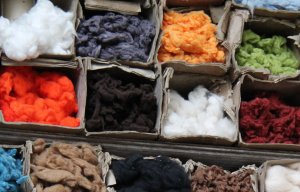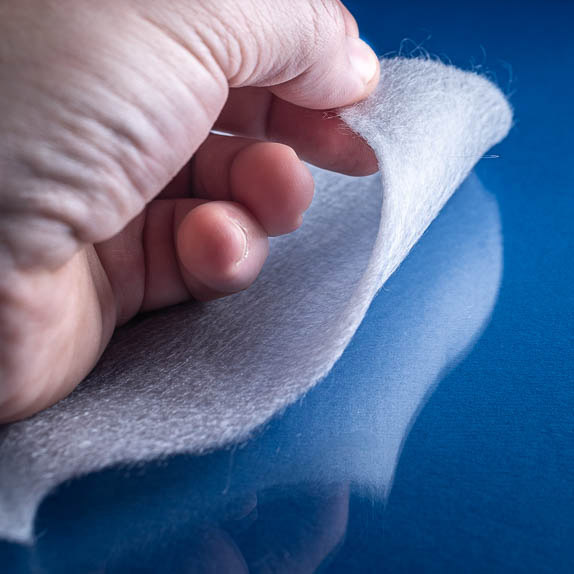
Microfibre shedding standard due shortly
Innovation in Textiles talks to to Paul Rushton, commercial director at UK-based Technical Absorbents, about a new patent pending geosynthetic fabric.

21st July 2025
Innovation in Textiles
|
Grimsby, United Kingdom
Innovation in Textiles (IIT): You’ve developed a new fabric that self-heals in a similar manner to the bentonite-based nonwoven clay liners that are used in large-scale geosynthetic applications such as landfill containment sites. How did you identify this market as an area of opportunity for your technology?
Paul Rushton (PR): We’ve always been familiar with the concept of self-healing and our superabsorbent fibre technology is already used in water-blocking applications for cables and structural waterproofing, so naturally, we were curious – how would a nonwoven fabric using our fibres perform compared to the bentonite clay-based fabrics that currently dominate the self-healing geo-liner space?
IIT: Can you tell us a bit more about your superabsorbent fibre?
PR: Sure. In the industry, it’s known as SAF. It’s a fibre that can absorb up to 200 times its own weight in water – even under pressure – and it does a great job of containing and retaining that moisture. We typically blend SAF with various other fibres to create high-performance absorbent fabrics and yarns.
IIT: How well does SAF work as a water-blocking material?
PR: In the cable industry, yarns and tapes made with SAF go inside the cable and if the outer sheath gets damaged they spring into action, absorbing water and swelling to block any further ingress. Today, SAF is also used by customers as a secondary protection layer in structural waterproofing membranes. Our superabsorbent needlepunched nonwoven fabrics provide a thin and cost-effective extra layer of protection against below grade water entry in structural waterproofing applications. When adhered to an HDPE waterproof membrane, the integrated SAF fibres will swell upon contact with groundwater if the membrane is breached in any way. The concept of absorbing, swelling and blocking is much the same.

IIT: Have you done any testing, either in-house or externally?
PR: We started with a simple in-house test to get a quick feel for how SAF fabric stacks up against standard bentonite clay liners. Both fabrics were placed in the same test rig, with equal amounts of water applied. In our test, the water flowed through the bentonite clay fabric but the SAF fabric absorbed it and retained it straight away. It was a basic demo, but it really demonstrated the effectiveness of SAF.
After our internal trials, we also had an external lab conduct industry-standard comparison tests. The results showed that SAF fabrics performed just as well as the bentonite clay samples across all tests.

IIT: Are there other benefits to using SAF fabrics in these kinds of applications?
PR: Absolutely. One of the big advantages is weight – SAF fabrics are extremely lightweight which makes them easier and more cost-effective to ship and install.
The SAF-containing nonwovens are also cleaner because the fibres are fully integrated within the fabric, so there’s no dust or shedding, which also helps ensure consistent water-blocking performance.
IIT: What are your plans for bringing this technology to market?
PR: We’re not trying to replace bentonite clay fabrics – we see SAF as an alternative, or even a complementary option, that could bring added value in the right applications. There is also a potential benefit in producing hybrid systems of both bentonite and SAF to maximise transportation and installation costs. Right now, we’re looking to connect with companies who already manufacture fabrics in this space and might be interested in working with our technology.

Business intelligence for the fibre, textiles and apparel industries: technologies, innovations, markets, investments, trade policy, sourcing, strategy...
Find out more